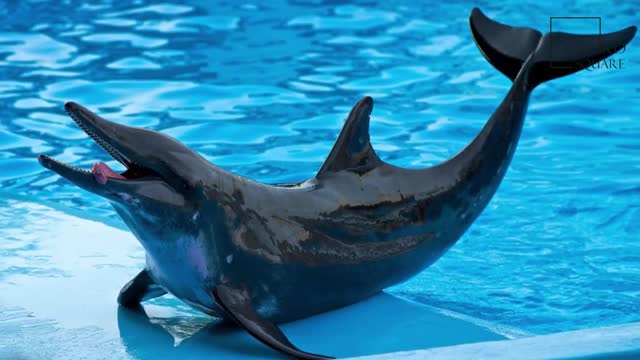Premium Only Content

Interesting facts about striped dolphin by weird square
he most, new, most recent, stunning, peculiar, frightening, entertaining, entrancing, fascinating and astonishing things | realities on the planet.
The striped dolphin (Stenella coeruleoalba) is a widely concentrated on dolphin tracked down in mild and tropical waters of the relative multitude of world's seas. It is an individual from the maritime dolphin family, Delphinidae.
The striped dolphin is one of five animal groups customarily remembered for the class Stenella; be that as it may, late hereditary work by LeDuc et al. (1999) shows Stenella, as customarily considered, is certainly not a characteristic gathering. As indicated by that review, the nearest family members of the striped dolphin are the Clymene dolphin, the normal dolphins, the Atlantic spotted dolphin, and "Tursiops" aduncus, which was previously viewed as a subspecies of the bottlenose dolphin. The striped dolphin was depicted by Franz Meyen in 1833. The particular name coeruleoalba (from Latin caeruleus 'dim blue' and albus 'white') alludes to the trademark blue and white stripes on the flanks.
The striped dolphin has a comparative size and shape to a few different dolphins that occupy the waters it does (see pantropical spotted dolphin, Atlantic spotted dolphin, Clymene dolphin). Be that as it may, its shading is altogether different and makes it somewhat simple to see adrift. The underside is blue, white, or pink. A couple of dark groups circle the eyes, and afterward stumble into the back, to the flipper. These groups extend to the width of the flipper which are a similar size. Two further dark stripes run from behind the ear — one is short and closures simply over the flipper. The other is longer and thickens along the flanks until it bends down under the midsection only preceding the tail stock. Over these stripes, the dolphin's flanks are hued light blue or dark. All limbs are dark, too. Upon entering the world, people weigh around 10 kg (22 lb) and depend on a meter (3 feet) in length. By adulthood, they have developed to 2.4 m (8 ft) (females) or 2.6 m (8.5 ft) (guys) and weigh 150 kg (330 lb) (female) or 160 kg (352 lb) (male). Research recommended sexual development was reached at 12 years in Mediterranean females and in the Pacific at somewhere in the range of seven and 9 years. Life span is around 55-60 years. Growth goes on around a year, with a three-or four-year hole between calving.
-
 1:06:42
1:06:42
The Connect: With Johnny Mitchell
2 days ago $3.23 earnedTruth About The Epstein Files: CIA Agent Reveals The Connection Between The Mossad, Epstein, & Trump
7.5K7 -
 3:55:35
3:55:35
Badlands Media
20 hours agoThe Narrative Ep. 30: Patriot Games
89K28 -
 2:34:45
2:34:45
Matt Christiansen
11 hours agoBondi v Bongino Epstein Debacle, CA Weed Farm ICE Raid, Guest Liberty Doll | MC Live 7/13/25
28.3K37 -
 2:27:02
2:27:02
TheSaltyCracker
9 hours ago1 Year Ago Today ReEEeStream 7-13-25
137K353 -
 1:11:43
1:11:43
Sarah Westall
13 hours agoHow Long will Humans Live? Immortal Reproductive Cells, Future of Anti-Aging w/ Dr. Bill Andrews
50.8K9 -
 7:32:32
7:32:32
SpartakusLIVE
10 hours agoLAST CHANCE for Spartakus' Loadouts w/ ADVANCEDgg || 25% off! - Code "Spartakus"
65.9K1 -
 4:35:37
4:35:37
EricJohnPizzaArtist
6 days agoAwesome Sauce PIZZA ART LIVE Ep. #54: I WANT MY PUDGE TV!
57.6K2 -
 2:08:06
2:08:06
Nerdrotic
11 hours ago $19.25 earnedLost History of Ancient Peru with Pillars of the Past | Forbidden Frontier #108
75.8K9 -
 2:17:57
2:17:57
TruthStream with Joe and Scott
16 hours agoRound Table with Mark Abrahams/NewsTreason, Patriot Underground and Bruce Poppy Screw Big Gov live 7/13 #461
35.2K7 -
 2:45:33
2:45:33
IsaiahLCarter
1 day ago $11.96 earnedFighting Crime in NYC, For Real This Time || APOSTATE RADIO EPISODE 023 (Guest: Maud Maron)
59K3